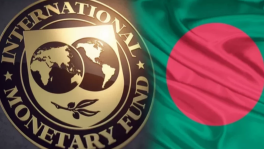What is RCEP all about?
The just concluded deal is a significant milestone in the evolution of economic cooperation within Asia. It has the potential to become the largest free trade area in the world. Policy makers in Bangladesh must take cognizance of the fact that some of our close competitors will have significantly easier access to the member economies’ markets and cost advantages in third markets

The Regional Comprehensive Economic Partnership (RCEP) agreement signed by 15 Asia-Pacific economies could become the world's largest free trade bloc covering nearly a third of the global population and global Gross Domestic Product (GDP). Members under the agreement will progressively lower tariff and nontariff barriers to allow freer movement of goods and boost investment within their territories.
The signatories include China, Japan, South Korea, Australia, New Zealand and the 10 members of the Association of South East Asian Nations (Asean): Brunei, Vietnam, Laos, Cambodia, Thailand, Myanmar, Malaysia, Singapore, Indonesia and the Philippines.
To come into effects, the deal must be ratified by at least six Asean countries and three non-Asean signatories. This may take a couple of years to complete. Anyone can join RCEP 18 months after it comes into force, except India which can join at any time once the deal comes into effect. Prime Minister Narendra Modi decided to pull India out at the eleventh hour apparently to protect domestic industries from Chinese competition.
RCEP paves the way for a reduction in trade barriers at a time when the intensified US-China rivalry and the Covid-19 pandemic pose challenges to the lay of the land in global trading. It may support a relatively faster recovery for its members, particularly China. According to Bloomberg economists, the agreement may boost China's GDP by 0.5% a year, South Korea by 1.4% and Japan by 1.3%, assuming 90% of tariffs are eliminated by 2030.
RCEP promises to transform the existing modest patterns of trade within the bloc. RCEP members sell most of their final products to the US and Europe. The agreement connects some of the world's largest economies. China, Japan, and South Korea now have commitments to one another, for the first time ever, for a wide range of tariff reductions and market access covering a range of goods, services, investment, intellectual property rights, competition policy, e-commerce, customs, and trade facilitation.
RCEP is a case of good economics trumping bad geopolitics. It demonstrates countries can cooperate while quarrelling with each other. RCEP attempts to separate the two, a lesson the South Asian countries can take to heart. This is the first time China, Japan and South Korea have coalesced together under a single trade umbrella, notwithstanding historical and diplomatic disputes. It fills a void left by the reticence of US to the global multilateral trading system and the rise of China in the ladder of global economic leadership.
Tariffs are set to fall on most products into most markets within 20 years. The specific areas open to tariff reductions are not yet fully known. Some countries have listed what RCEP includes and others what it does not.
Seven RCEP members are also part of the Comprehensive and Progressive Agreement for Trans-Pacific Partnership (CPTPP). These countries already have free trade agreements (FTAs) with each other, thus apparently limiting the room for further tariff reduction. However, the existing FTAs are complicated compared to RCEP. The rules and procedures between agreements often differ, making them challenging to use. RCEP will mitigate these complications.
Large gains are expected from the harmonisation of the Rules of Origin requirements. Businesses with global supply chains face tariffs even within an FTA because their products contain components made elsewhere. Under RCEP, parts from any member nation would be treated equally by having a single rule of origin for all. Products manufactured to meet RCEP originating criteria can be shipped to all 15 markets without any adjustments in suppliers, raw materials, parts, or components. One certificate of origin will suffice. This will significantly reduce the time and cost of trading across borders within the RCEP.
Tariff reduction and rules of origin harmonization are only part of the RCEP story. Intra-regional trade in services has tended to be exceedingly small in Asia. RCEP contains a wide range of commitments to loosen restrictions and allow businesses across the region to deliver more easily services ranging from graphic design to back-office processing, engineering, and education. Significant new benefits are expected in important areas such as e-commerce and intellectual property rights protections and enforcement.
RCEP is touted as a "low ambition" trade deal. It requires fewer political or economic concessions and has scanty emphasis on labour rights, environmental and intellectual property protections, and dispute resolution mechanisms. The agreement provides some flexibility for less-developed members to implement the required practical and legislative changes. Cambodia and Laos, for example, have three to five years to upgrade customs procedures.
The US is unlikely to join the RCEP any time soon despite the change of administration in January. The President-elect Joe Biden made it clear on 16 November that for the US to join any trading bloc, labour and environment must have a seat at the table. China, the dominant player in RCEP, will probably not be too enthused to do so. They may start talking but take their time in walking the talk.
Bangladeshi exporters will face tougher competition in RCEP markets vis-à-vis Vietnam, Cambodia, Indonesia, and Myanmar. There are products in several sectors that would give price advantage to competitors in RCEP. These are food processing, textile, and garment, chemical and petrochemicals, among others. The market for these products would comprise not only of Asean, with its more than 600 million population, but also the huge number of consumers from the other five partner nations. Bangladesh's competitors will also get cost advantage in third markets by sourcing duty free inputs from each other.
RCEP will encourage the continued inward investment that has driven productivity growth in many of the economies in the region in the past. Companies in RCEP countries have an incentive to look for suppliers within the region. Japanese investors may be more inclined to expand investments in Asean rather than Bangladesh because of the trade barriers facing Bangladesh as a non-member in addition to the high cost of doing business. The tariff barriers Bangladesh faces in these markets will be tighter following graduation from LDC status expected in 2024.
Seeking to be co-opted in RCEP could help Bangladesh make progress on export diversification – both markets and products. But this will not be a free lunch. The RCEP may have a significant adverse impact on local industries such as electrical appliances and steel products. These will face fierce competition from rival low-priced Chinese products. The gains from export diversification, however, could outweigh the losses to local import substituting industries that are surviving behind high tariff walls. The latter will have time to adjust to the changed reality as the process of creative destruction unfolds.


 Keep updated, follow The Business Standard's Google news channel
Keep updated, follow The Business Standard's Google news channel















